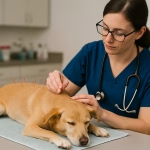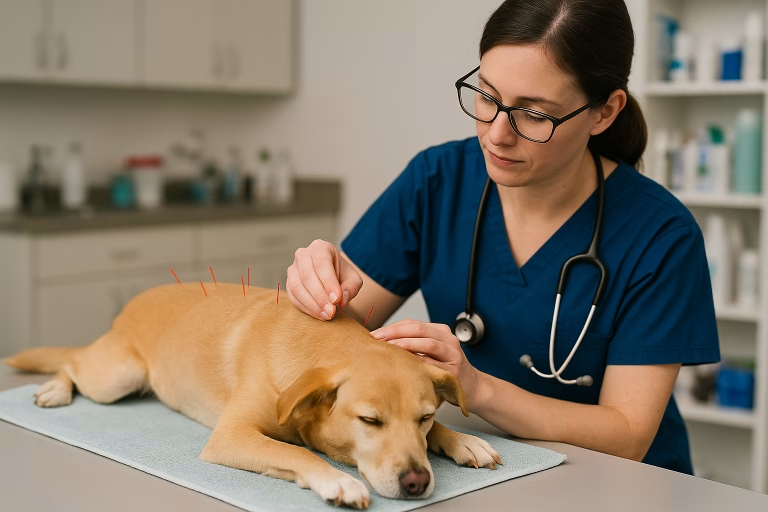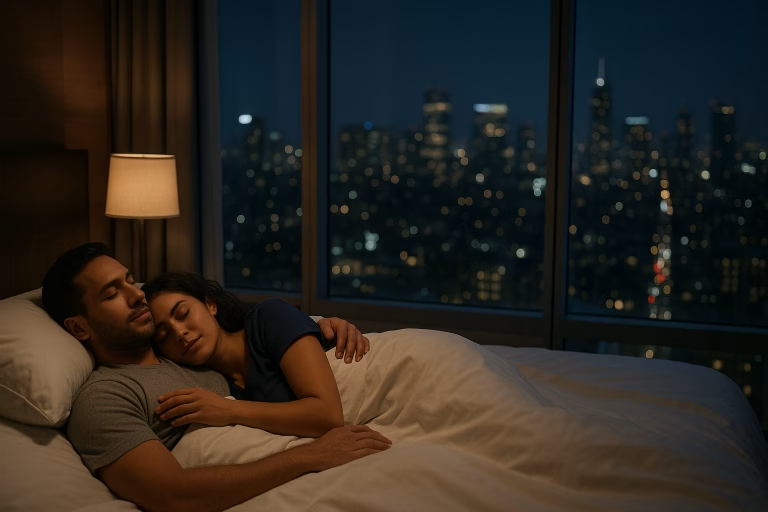
Feeling sick while traveling is more common than you might think. Whether you’re riding in a car, flying on a plane, cruising on a boat, or taking a train, motion sickness can hit anyone—kids, adults, and even seasoned travelers. It happens when there’s a disconnect between what your eyes see and what your body feels. For example, your eyes might be focused on a book or a phone, while your inner ear senses movement. This sensory mismatch confuses the brain and triggers symptoms like nausea, dizziness, and cold sweats.
Luckily, you don’t have to suffer in silence. There are effective solutions available—from trusted over-the-counter medications to natural and wearable remedies—that can prevent motion sickness before it starts or stop it in its tracks.
In this guide, we’ve rounded up the 10 best motion sickness remedies for 2025, including pharmacist-recommended treatments that are safe, effective, and easy to use. Whether you’re looking for a pill, a patch, a wristband, or a natural option like ginger, we’ve got you covered.
Let’s dive in and find the best remedy to help you travel in comfort and peace.
What Causes Motion Sickness? Top Reasons You Might Feel Sick While Traveling
Understanding the common causes of motion sickness can help you prevent it before it starts. Motion sickness happens when your brain gets mixed signals from your eyes, inner ears, muscles, and joints. Here are the most common triggers:
- Sensory Mismatch – Your eyes say you’re still, but your inner ear feels motion (like in a car or boat).
- Reading or Looking at Screens – Focusing on a book or phone while moving confuses your brain.
- Poor Air Circulation – Stuffy, hot, or smelly environments can make symptoms worse.
- Anxiety or Fear of Traveling – Worrying about getting sick can actually cause it.
- Irregular or Bumpy Movement – Riding in the back seat, rough seas, or turbulence can trigger symptoms.
- Lack of Visual Reference – Not being able to see the horizon or outside scenery (like in a windowless room or cabin) can lead to confusion in your balance system.
Knowing what causes motion sickness is the first step toward finding the right remedy that works for you.
Common Symptoms of Motion Sickness: Signs You Might Be Travel Sick
Motion sickness can come on suddenly and make travel uncomfortable or even unbearable. Recognizing the early symptoms can help you take action before they get worse. Here are the most common signs to watch for:
- Nausea or queasy stomach – The most noticeable and common symptom.
- Dizziness or lightheadedness – Feeling off balance or like the room is spinning.
- Vomiting – In severe cases, nausea can lead to throwing up.
- Cold sweats – A sudden, clammy feeling often accompanies nausea.
- Headache – Tension and discomfort can build, especially in stuffy environments.
- Fatigue or tiredness – Feeling drained or sleepy during or after travel.
- Increased salivation – Excess spit production is often an early warning sign.
If you experience these symptoms while traveling, it’s likely motion sickness—and there are several remedies that can help you feel better fast.
Top 10 Best Motion Sickness Remedies for 2025
1. Bonine (Meclizine HCl) – #1 Pharmacist Recommended
How It Works:
- Meclizine is an antihistamine that blocks the signals in the brain that trigger nausea, vomiting, and dizziness related to motion.
What Makes It Special:
- Long-lasting relief (up to 24 hours) with less drowsiness compared to older antihistamines.
Side Effects:
- Possible drowsiness, dry mouth, or blurred vision.
Counseling Points:
- Take 1 hour before travel.
- Avoid alcohol and other sedatives.
- Do not exceed the recommended dose.
2. Dramamine Original Formula (Dimenhydrinate)
How It Works:
- Dimenhydrinate works by reducing activity in the brain area that controls nausea and vomiting.
What Makes It Special:
- Fast-acting and effective for severe nausea and vertigo.
Side Effects:
- Drowsiness, dry mouth, blurred vision, and potential sedation.
Counseling Points:
- Take 30–60 minutes before travel.
- Avoid driving or using machinery.
- Drink plenty of fluids to reduce dry mouth.
3. Sea-Band Acupressure Wristbands
How It Works:
- Applies consistent pressure to the P6 (Neiguan) acupressure point on the wrist to relieve nausea naturally.
What Makes It Special:
- Drug-free, reusable, and suitable for all ages.
Side Effects:
- Rare; may cause minor skin irritation or discomfort if worn too tightly.
Counseling Points:
- Wear on both wrists before and during travel.
- Effective for morning sickness and chemotherapy-induced nausea as well.
4. Travel-Ease (Ginger Root Capsules)
How It Works:
- Ginger reduces nausea by enhancing gastric motility and blocking serotonin receptors in the gut.
What Makes It Special:
- All-natural option with centuries of traditional use.
Side Effects:
- May cause mild heartburn, gas, or bloating.
Counseling Points:
- Take 30–60 minutes before travel.
- Safe for most people including pregnant women with doctor’s advice.
5. Reliefband Classic (FDA-Cleared Wearable Device)
How It Works:
- Uses clinically tested neuromodulation (gentle electrical pulses) to stimulate the median nerve, disrupting nausea signals to the brain.
What Makes It Special:
- Reusable, adjustable, and scientifically proven to work quickly.
Side Effects:
- Possible mild skin irritation or tingling sensation at the application site.
Counseling Points:
- Wear on the underside of your wrist.
- Adjust intensity level for comfort.
- Ideal for frequent travelers or chronic nausea sufferers.
6. Hyland’s Motion Sickness Tablets (Homeopathic)
How It Works:
- A homeopathic blend that triggers the body’s natural defense to relieve nausea, vomiting, and dizziness.
What Makes It Special:
- Non-drowsy, gentle on the stomach, and safe for kids.
Side Effects:
- Minimal; generally well-tolerated.
Counseling Points:
- Dissolve tablets under the tongue.
- Start at the first sign of motion sickness.
- May be used alongside other treatments.
7. QueaseEase Aromatherapy Inhaler
How It Works:
- A proprietary blend of essential oils (ginger, peppermint, spearmint, lavender) works through inhalation to calm the stomach and nervous system.
What Makes It Special:
- Portable, instant relief without ingestion.
Side Effects:
- Rare; strong scents may be overwhelming to some users.
Counseling Points:
- Inhale deeply at the onset of nausea.
- Safe during pregnancy.
- Keep cap on tightly to preserve freshness.
8. CVS Motion Sickness Relief (Generic Dimenhydrinate)
How It Works:
- Contains dimenhydrinate, which prevents communication between the inner ear and the vomiting center in the brain.
What Makes It Special:
- Budget-friendly, widely accessible alternative to Dramamine.
Side Effects:
- Drowsiness, dry mouth, blurred vision.
Counseling Points:
- Take 30 minutes before travel.
- Limit use if planning to stay alert or drive.
- Maintain hydration.
9. Nature’s Way Ginger Root
How It Works:
- Gingerol and shogaol compounds in ginger reduce nausea by speeding up stomach emptying and soothing gut muscles.
What Makes It Special:
- Trusted herbal brand with standardized potency.
Side Effects:
- May cause mild digestive discomfort.
Counseling Points:
- Take with a light snack.
- Can be paired with acupressure for added effect.
- Use regularly for chronic travel-related nausea.
10. Motioneaze (Topical Essential Oil Blend)
How It Works:
- A blend of peppermint, lavender, and other oils absorbs through the skin behind the ear, targeting balance centers.
What Makes It Special:
- Easy topical application, drug-free, and works quickly.
Side Effects:
- May cause minor skin sensitivity or greasy feel.
Counseling Points:
- Apply behind each ear.
- Reapply every 4–6 hours if needed.
- Wash hands after application to avoid contact with eyes.
When to See a Doctor for Motion Sickness: Warning Signs You Shouldn’t Ignore
While most cases of motion sickness are mild and manageable with over-the-counter remedies, there are times when it’s important to seek medical advice. Talk to your doctor if you experience any of the following:
- Motion sickness that happens frequently – If it occurs even during short trips or simple movements.
- Severe or persistent vomiting – If you’re unable to keep fluids or food down.
- Balance problems or frequent dizziness – Especially if these symptoms happen even when you’re not traveling.
- Hearing changes or ringing in the ears – This may indicate an issue with the inner ear.
- Unexplained headaches or vision changes – These could be signs of something more serious.
- Symptoms that don’t improve with medication – If OTC or natural remedies don’t work after several tries.
A doctor can help rule out other conditions like vertigo, migraines, or inner ear disorders—and recommend stronger treatments if necessary.
Lifestyle Tips to Prevent Motion Sickness Naturally: Better Habits for Travel Comfort
Simple lifestyle changes can go a long way in preventing motion sickness and helping you enjoy your journey. Try these proven tips before and during your trip:
- Choose the right seat
- Sit in the front seat of a car, over the wings in a plane, or mid-ship on a boat for the most stability.
- Keep your eyes on the horizon
- Looking at a fixed point in the distance helps your body align visual and balance cues.
- Avoid reading or using screens
- These can confuse your brain and trigger symptoms.
- Get fresh air
- Open a window or use an air vent to avoid stuffy or smelly environments.
- Stay hydrated
- Drink water and avoid alcohol or heavy meals before traveling.
- Eat light before traveling
- A small, bland snack like crackers or toast is better than greasy or spicy food.
- Use relaxation techniques
- Deep breathing, meditation, or calming music can help reduce anxiety and nausea.
- Avoid strong odors
- Perfumes, fuel, or food smells can quickly trigger nausea.
- Try natural aids
- Ginger tea or peppermint candy may help soothe your stomach naturally.
Making these small adjustments to your routine can make a big difference in how you feel during your next trip.
Final Thoughts: Travel with Confidence, Not Nausea
Motion sickness may be common, but it doesn’t have to control your travel plans. With the right preparation and remedies, you can reduce your risk of feeling sick and enjoy your trip—whether it’s by car, plane, boat, or train.
Here’s a quick recap to help you stay ahead of motion sickness:
- Know your triggers – Understand what causes your symptoms so you can plan accordingly.
- Be proactive, not reactive – Take preventive remedies before symptoms start.
- Choose the right remedy – From over-the-counter meds to natural solutions, pick what works best for your body and lifestyle.
- Talk to a healthcare provider – If your symptoms are severe or frequent, get personalized advice.
- Adopt smart travel habits – Simple lifestyle changes can significantly reduce your risk.
Everyone reacts differently, so it might take a little trial and error to find your best solution. But with the tips and products in this guide, you’re well on your way to smoother, nausea-free travels.
#Hashtags: #MotionSicknessRelief, #TravelHealthTips, #NauseaRemedies, #NaturalMotionSicknessCures, #BestOTCforMotionSickness, #PharmacistRecommended, #TravelSicknessHelp, #SeasicknessRelief, #AirTravelTips, #CarSicknessRemedy, #GingerForNausea, #SeaBandRelief, #Reliefband, #QueaseEase, #Bonine









